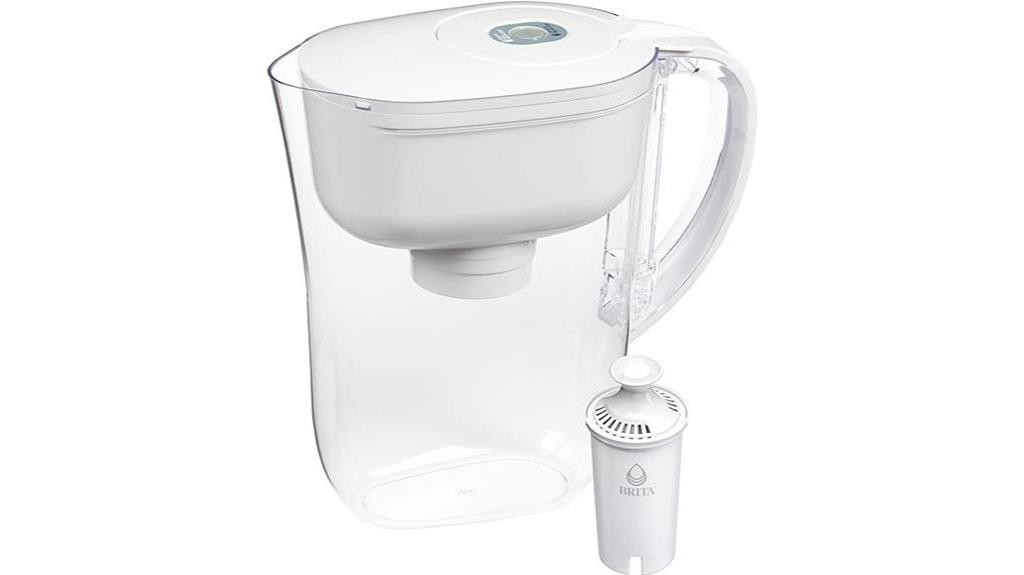Are you a pet owner who uses water softener salt in your home? You may be wondering if this common household item is safe for your furry friend. Water softener salt is essentially table salt and considered safe for human consumption, but its effects on dogs are not as well known.
In this article, we will explore the safety of water softener salt for dogs and the potential risks associated with ingestion. First, let’s dive into the use of salt in water softeners. Water softeners work by removing minerals, such as calcium and magnesium, from hard water. This is done through a process called ion exchange, where resin beads in the softener attract and capture the minerals.
Over time, the resin becomes saturated with minerals and needs to be regenerated. This is where water softener salt comes in – it is used to flush the minerals from the resin and recharge it for continued use. But what happens if your dog ingests some of this salt during the regeneration process? Stay tuned to find out.
Key Takeaways
– Water softener salt is essentially table salt and is ‘food grade’ and free of contaminants, making it safe for dogs to drink.
– Ingesting large quantities of water softener salt can cause stomach pain and vomiting in dogs.
– Dogs naturally require sodium in their diet for healthy bodily functions, but excess salt intake can lead to salt toxicosis or hypernatremia, which can be damaging to the cells and neurological system.
– Treatment for salt poisoning in dogs includes easing clinical symptoms, rehydrating the body, and gradually fixing electrolyte imbalance. In severe cases, a dog may need to receive water via a stomach tube.
Use of Salt in Water Softeners
You might be wondering about the use of salt in water softeners and how it relates to your dog’s safety. Water softeners require salt to regenerate the resin, and the salt used is essentially table salt – sodium chloride. This type of salt is considered ‘food-grade’ and is free of contaminants.
Water softener salt is effective in removing minerals that cause hard water, so it benefits both you and your pet by providing clean and purified water. The use of water softener salt is safe for dogs. The salt is not toxic or poisonous to dogs unless ingested in large quantities.
In fact, water treated with water softener salt is completely safe for dogs to drink. However, if your dog ingests water softener salt, it may experience stomach pain and vomiting. If you suspect your dog has ingested water softener salt, it’s best to give them plenty of clean and fresh water to dilute the salt and prevent dehydration.
Chemical Composition
Understand that the chemical composition of the salt used in water softeners and table salt is identical. Both contain sodium chloride, which is essential for the body’s proper functioning. However, the key difference between the two is the grade of salt used.
Water softener salt is ‘food grade’ and free of contaminants, whereas industrial grade salt may contain impurities that can be harmful to dogs.
Here are four important things to keep in mind when it comes to sodium and dogs:
1. Dogs naturally require sodium in their diet for healthy bodily functions.
2. Adding the right amount of salt to a dog’s diet is crucial.
3. Excess salt intake in dogs can lead to salt toxicosis or hypernatremia.
4. Sodium, being an electrolyte, is generally balanced in the body. As long as dogs have access to fresh water, they can regulate their sodium levels on their own.
Potential Risks for Dogs
Be aware of the potential risks for your furry friend when it comes to ingesting excessive amounts of sodium. While water softener salt is safe for dogs to drink in normal amounts, ingesting large quantities can lead to salt poisoning or hypernatremia.
This can cause a range of symptoms, including vomiting, diarrhea, diminished appetite, lethargy, unsteadiness or stumbling while standing, seizures or tremors. If you suspect that your dog has ingested too much water softener salt, it’s important to take preventative measures and manage the symptoms accordingly.
The first step is to give your dog plenty of clean and fresh water to dilute the salt and prevent dehydration. Smaller breeds are more susceptible to toxicity, so if you have a smaller dog, be especially vigilant. Keep an eye on your dog for several hours until clinical symptoms appear, and if necessary, seek veterinary treatment.
With proper symptoms management and preventative measures, your furry friend should be able to regain their normal fluid and electrolyte balance within a few days.
Treatment for Salt Poisoning
If your furry friend shows signs of salt poisoning, seek veterinary treatment immediately to manage symptoms and prevent further complications. The treatment for salt poisoning in dogs involves easing clinical symptoms, rehydrating the body, and gradually fixing electrolyte imbalance. The recovery process can take up to two to three days, depending on the severity of the poisoning.
To restore electrolyte balance, your dog will need to be rehydrated with clean and fresh water. Hydration techniques will vary depending on the size of your dog. Large breeds should consume 0.5% of their body weight of water every hour until they are well hydrated, which generally takes many days. Smaller breeds, on the other hand, will require smaller amounts of water given frequently to prevent clinical symptoms from escalating. To help you understand the hydration process better, here is a table that shows recommended water intake based on your dog’s weight:
| Dog’s Weight | Recommended Water Intake |
|---|---|
| Up to 10 lbs | 1/2 cup every 2 hours |
| 10-30 lbs | 1-2 cups every 2-4 hours |
| 30-50 lbs | 2-3 cups every 4-6 hours |
| Over 50 lbs | 3-4 cups every 6-8 hours |
It’s important to note that dogs suffering from salt poisoning will experience a gradual recovery process. All dogs should gradually regain their normal fluid and electrolyte balance over two to three days following treatment. It’s essential to monitor your dog during this period and ensure they are well hydrated. If you notice any unusual symptoms or your dog’s condition does not improve, seek veterinary attention immediately.
Conclusion
So, is water softener salt safe for your furry friend? While it may be safe in small amounts, it’s important to be cautious and prevent your dog from ingesting it.
High levels of sodium can lead to salt poisoning, which can be life-threatening for your pet. Symptoms include vomiting, diarrhea, seizures, and even death.
It’s important to monitor your dog’s sodium intake and prevent them from accessing any water softener salt. If you suspect your dog has ingested water softener salt or is showing symptoms of salt poisoning, seek veterinary attention immediately.
With proper caution and care, you can keep your furry friend safe and healthy.




